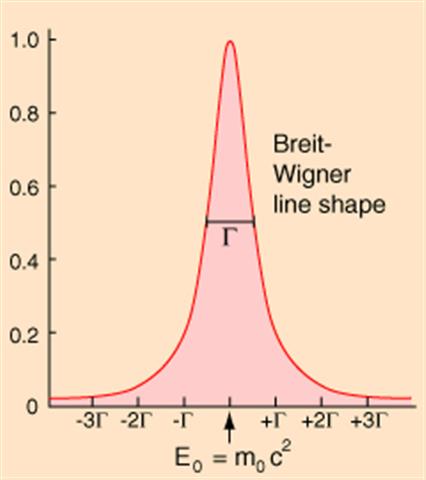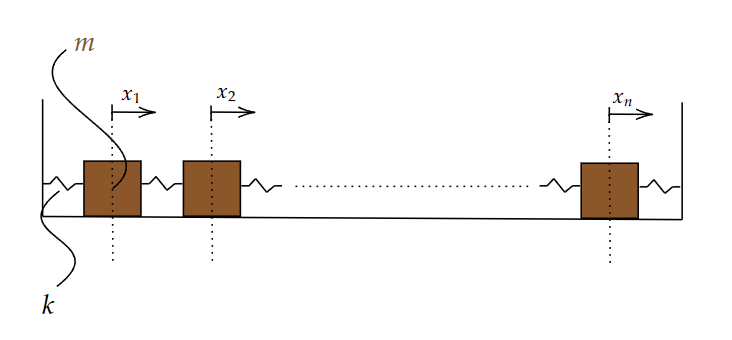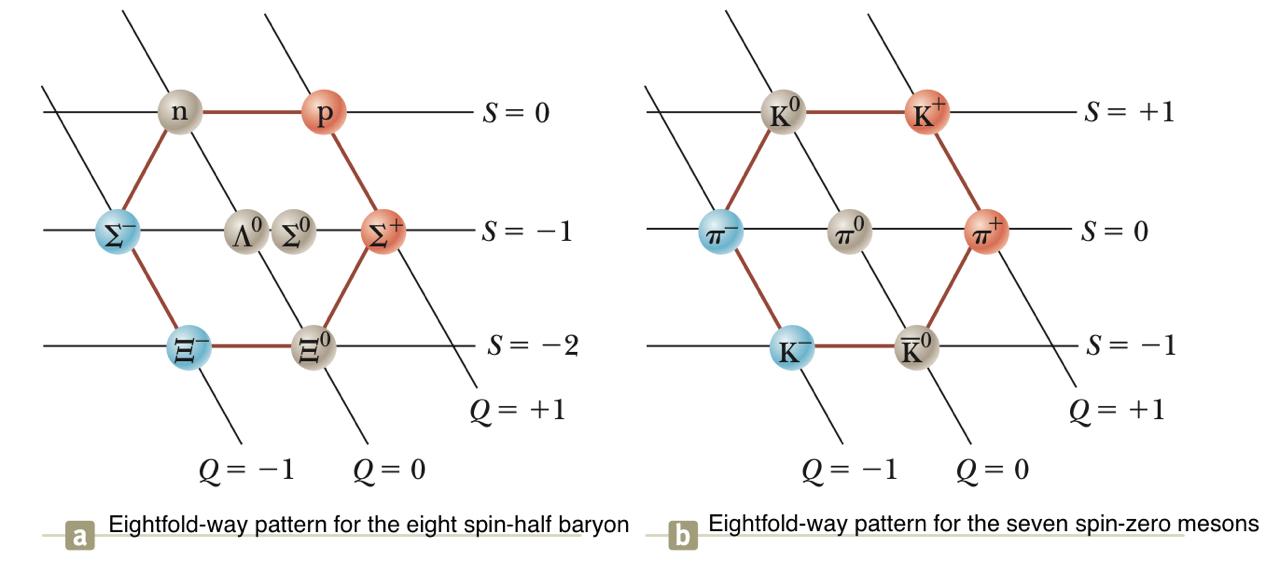2025
Practicals
PG Practicals
Contour Integration
The basic idea of contour integration is to extend the concept of integration from the real line to the complex plane. Instead of integrating a function along a real interval, we integrate it along a path (or contour) in the complex plane. This allows us to use the properties of analytic functions and the residues of poles to evaluate integrals that would be difficult or impossible to compute using standard real analysis techniques.
JET: English-PRACTICE SET-I
PRACTICE SET-I
JET: English-Lecture-IV
Ratio
Quantum Mechanics in Momentum Space by M Lieber
By M. Lieber Received 18 June 1974
JET: English-Lecture-III
Time & Distance
Star & Delta Connection
Star (also called Wye or Y) and Delta (Δ) connections are fundamental network configurations used extensively in electrical engineering, circuit design, and power system analysis. These connections help simplify complex three-phase networks, making them easier to analyze for voltage, current, impedance, and power calculations. The star connection consists of three circuit elements whose one end is connected to a common junction known as the star point or neutral point, while the other ends form the three independent phase terminals. This configuration resembles the shape of the letter ‘Y’. It is widely used in power transmission systems, distribution networks, and balanced load connections due to its ability to provide two voltage levels—phase and line voltages.
PG-II-Practical
JET: English-Lecture-II
Number & Letter Series
Fock
On the Theory of the Hydrogen Atom
by V. Fock, Leningrad
(Received August 5, 1935)
Fock-German
Theory of the Hydrogen Atom
JET: English-Lecture-I
Number System
JET - Paper-I
These topics will be covered from the subject General Paper on Teaching & Research Aptitude (Code No. 00, Paper-I), and the reading materials can be accessed by clicking on the hyperlinks.
JET: Lecture-V
1. Scalar and Vector Potentials
JET: Lecture-IV
Integral Theorems
JET: Lecture-III
Line, Surface and Volume Integral
Resistors
Resistors: Types, Characteristics, and Colour Coding
Frame Of Reference
In the study of scattering theory, nuclear reactions, and collision processes, the distinction between the Laboratory (Lab) reference frame and the Centre-of-Mass (CM) reference frame plays a central role. These two frames provide different perspectives for describing the motion, momentum transfer, and angular distribution of interacting particles. Since observations in an experiment are made in the laboratory frame, but theoretical simplicity often arises in the centre-of-mass frame, understanding the transformation between these two coordinate systems becomes essential.
Alpha Scattering
Alpha (α) scattering refers to the interaction of alpha particles—helium nuclei consisting of two protons and two neutrons—with atomic nuclei or atoms. The study of α-scattering has played one of the most pivotal roles in the development of modern physics. Historically, Rutherford’s α-scattering experiments in 1909 led to the discovery of the atomic nucleus and gave rise to the planetary model of the atom. These experiments showed that most α-particles pass through thin metal foils with little deflection, while a very small fraction undergo large-angle scattering, revealing the presence of a compact and massive nucleus.
3D Collision
The theory of collision in three dimensions is a fundamental aspect of quantum scattering, describing how a particle interacts with a potential when motion is not restricted to a single line but occurs in full three-dimensional space. Unlike one-dimensional scattering, where the particle approaches the potential from the left or right, three-dimensional collisions require the description of wave propagation in spherical geometry. This approach is crucial in understanding atomic, nuclear, and molecular processes where interactions occur isotropically.
Molecular Spectra
Rotational, Vibrational and Electronic Spectra of Diatomic Molecules
JET - Physical Science
These topics will be covered here, and the reading materials can be accessed by clicking on the hyperlinks.
MSC Sem-II
These topics will be covered here, and the reading materials can be accessed by clicking on the hyperlinks.
JET-NET PAGE
Practical Question: Python
Numerical Methods Problem Set
Learning Objectives:
- Review all built-in, NumPy, and math functions used across typical numerical methods problems given at the end of this page.
- Understand and apply key numerical methods including root finding, interpolation, curve fitting, numerical integration, and solving ODEs.
- Practice basic numerical algorithms using Python.
Interaction of Solids with EM Field
Learning Objectives:
Polarons
In solid-state physics, polarons are quasiparticles formed due to the interaction of an electron (or hole) with the phonons (quantized lattice vibrations) in an ionic crystal. This interaction leads to a modification of the electron’s motion, as it becomes “dressed” with a polarization cloud of lattice distortion.
Polaritons
In solid-state physics, polaritons are quasiparticles arising from the strong coupling of photons with optical phonons in a crystal. These coupled modes play a central role in understanding the optical properties of ionic crystals, particularly in the infrared frequency range.
Tight-Binding Approximation
Nearly Free Electron Model and Energy Bands in One Dimension, Tight-Binding Approximation
Small Oscillations
Small Oscillations, Normal Modes of Vibration, Coupled Oscillators
Poisson Bracket, Poisson Theorems
Learning Objectives:
Plasma Oscillations and Plasmons
Learning Objectives:
Hamilton–Jacobi Equation
Hamilton–Jacobi Equation with Example of Harmonic Oscillator
Generating Function
Learning Objectives:
Legendre Transformation
Learning Objectives:
Hamilton Equation of Motion
Hamilton’s Equations of Motion
Hamilton’s Principle
Hamilton’s Principle
Least Action Principle
The Principle of Least Action
Calculus of variation
Calculus of variation
Lagrange’s Equation
D’Alembert’s Principle, Lagrange’s Equation and Its Simple Applications
Dielectric Properties of Materials
Macroscopic Dielectric Constant
Numerical Methods
Eigenvalues and eigenvectors play a central role in linear algebra, with wide applications in physics, engineering, and data science. They help understand the action of a linear transformation in a given vector space.
Image Processing: Eigenvalues and Eigenvectors
🧠 Objective
This lecture explores the application of eigenvalues and eigenvectors in image processing using Principal Component Analysis (PCA). We will:
Dissertation: N-Interconnected Mass-Spring System
Dissertation-Heat Equation
Simulation of the Heat Equation in a Rectangular Room
Dissertation-Wave Equation
Simulation of the Wave Equation in a Circular Domain Using Python
Python: Course Contents
🚀 Hands-on Practice: Practice coding by clicking on button below:
Python: Object-Oriented Programming
Object-Oriented Programming (OOP) is a programming style that organizes code into objects, which store data and perform actions. This method makes programs more structured, reusable, and secure. The four main concepts of OOP are:
Windows: Basics of Command Prompt
The Command Prompt (cmd.exe) is a command-line interpreter in Windows that allows users to execute commands, run scripts, and perform administrative tasks.
Basic Electronics: Boolean Algebra
Boolean algebra is a mathematical structure used to perform operations on binary variables (0s and 1s). It is fundamental in digital logic design and computer science.
The Concept of Isospin
Isospin is a quantum number that describes the symmetry between particles with similar properties but different electric charges. It was first proposed by Werner Heisenberg in 1932 to explain the near-degeneracy of protons and neutrons. These particles, collectively called nucleons, were found to behave similarly under the strong nuclear force, suggesting an underlying symmetry.
Assignment-I
Instructions:
Explain how complex physical expressions can simplify to exponential decay through Taylor series or other approximations. Provide detailed derivations for the following cases.
Quantum Tunneling
In this article we will study:
Scattering Revisited

In this lecture, we will start by revisiting the basics of quantum scattering, focusing on partial wave analysis and phase shifts. The graph at the top illustrates the Breit-Wigner resonance curve, which we will discuss in detail after exploring resonance scattering and its role in energy-dependent cross-sections.
2024
Nuclear Reactions
Nuclear reactions can occur when a target nucleus $X$ is bombarded by a particle $a$, resulting in a daughter nucleus $Y$ and an outgoing particle $b$:
Basic Electronics: Semiconductors
In 1839, Becquerel discovered that some materials generate an electric current when exposed to light. This is known as the photoelectric effect and is the basis of operations of solar cells. Solar cells are made of semiconductors.
- Note: Semiconductors are materials that act as insulators at low temperatures, but as conductors when energy or heat is available.
Particle Physics: Quarks
Particle Physics: Conservation Laws
The conservation laws of energy, momentum, and charge govern all processes. In particle physics, additional empirical conservation laws are also crucial. They are:
- Conservation of baryon number
- Conservation of lepton number
- Conservation of strangeness
- Conservation of isospin
- Conservation of electric charge
Particle Physics: Particle Classification
Japanese physicist Hideki Yukawa proposed in 1935 that the nuclear force is mediated by a new particle, a meson, whose exchange between nucleons causes the force. He predicted its mass to be about 200 times that of an electron, earning him a Nobel Prize in 1949. Because the new particle would have a mass between that of the electron and that of the proton, it was called a meson (from the Greek meso, “middle”)
Particle Physics Introduction
PG-III Lecture Topics
LASER Rate Equation
Stark Effect in Hydrogen Atom
In the hydrogen atom, the energy levels are determined by the principal quantum number \(n\), and for a given \(n\), the energy is given by:
Approximation Method
Perturbation theory is a powerful tool in quantum mechanics used to study systems where the Hamiltonian can be separated into a known part \(H_0\) and a small perturbation \(H'\). The goal is to find approximate solutions to the Schrödinger equation for the full Hamiltonian \(H = H_0 + H'\) by treating the perturbation as a small correction to the known system.
Scattering
Consider the Hamiltonian $H$ of the system, which is time-independent, given by
Derivations-QM: Current Density Conservation Equation
The Dirac equation for a free particle is given by:
LASER
``` Basic principles and different LASER’s: principles and working of Ruby Laser, He-Ne Laser, Solid state laser, semiconductor laser CO2 LASER and qualitative description of longitudinal and TE- LASER systems, Excimer LASER, Dye LASER, Roman LASER, Plasma recombination LASER.
Tutorial-QM
This tutorial covers Klein-Gordon and Dirac equations in quantum mechanics.
Relativistic Quantum Mechanics
Below is the outline of the lecture on Relativistic Quantum Mechanics, covering the Klein–Gordon equation, Dirac equation, probabilities and current densities, magnetic moment and spin of the electron, and free particle solutions of the Dirac equation.
Additional Resources
Science
1. What is Science?
2022
Back to Top ↑2021
KaTeX demo
Including mathematical notations in your post is possible thanks to KaTeX.
To add a math notation all you need to do is add $$ signs at the beginning and end of the notation.
An example for you guys,
Mermaid demo
Want to add diagrams, charts and visualizations in your post?
It is possible and guess what? It’s not that difficult thanks to Mermaid.
All you need to keep in mind is you’ll have to wrap your Mermaid markup in a div with class mermaid.
Here is a simple example of a basic flowchart,


